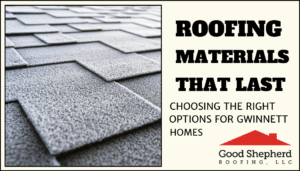
When investing in a New Roof, one of the first questions homeowners ask is, ‘How long does a roof last?’ This fundamental question underscores the importance of choosing the right roofing material for your home. The longevity of a roof is influenced by a variety of factors, including material quality, environmental conditions, and maintenance practices. This blog aims to explore the aging characteristics of different roofing materials, offer guidelines for maximizing their lifespan, and introduce innovative technologies in roofing. Understanding these aspects can help you make informed decisions, ensuring that your roof not only enhances the aesthetic appeal of your home but also provides long-lasting protection.
Aging Characteristics of Roofing Materials
Asphalt Shingles are common on houses because they are affordable and versatile, The basic 3-tab kinds last 15 to 20 years. Architectural shingles, which are thicker and have more design, last 20 to 30 years, enhancing their strength.
Class 4 asphalt shingles are an excellent choice. They can handle severe weather and have a lifespan of 30 to 50 years, making them ideal for areas prone to frequent hailstorms. Tile shingles, known for their durability, last over 50 years and are resistant to fire, rot, and pests, combining strength with aesthetic appeal.
Slate shingles offer the longest lifespan, lasting more than 100 years. Natural slate is not only attractive but also requires minimal maintenance, making it a wise long-term investment. Synthetic slate, such as Davinci shingles, offers the appearance and durability of natural slate but at a more affordable cost, increasing its popularity among homeowners.
Guidelines for Roofing Material Longevity
Routine upkeep is crucial for any roof’s longevity. Annual checks spot damages early. For asphalt variants, addressing damages swiftly averts leaks and boosts lifespan. Proper ventilation and insulation maintain optimal temperatures and moisture, safeguarding your home. Opting for superior materials and expert installation further ensures durability.
Factors Affecting Roof Lifespan
Many things can affect the lifespan of a roof. These include the weather, how much sun it gets, how well it’s installed, and how it’s taken care of. Homeowners should think about these things when choosing materials. This helps protect their investment.
Environmental Considerations
The environment – like humidity, changes in temperature, and extreme weather – accelerates the aging of roofing materials. In places with harsh weather, you might need to take more measures to protect your home. Understanding these environmental effects aids in maintaining your roof and prevents premature damage.
Expanding Maintenance Guidelines
Besides regular checks, there are more things homeowners can do to make their roof last longer. Cleaning the gutters stops water damage and strain on the structure. Cutting back trees keeps debris from building up and reduces the risk of damage. Changing the sealants and flashing around chimneys and vents stops water from getting in, which is a common way roofs get damaged.
For those unsure about the condition of their roof or who wish to ensure their roof is in optimal shape, scheduling a Professional Inspection is a wise decision. Visit Good Shepherd Roofing for a detailed inspection to identify any potential issues and maintain the integrity of your home.
Choosing the Right Material
Picking the right material is very important. Materials that reflect sunlight, for example, keep the roof from getting too hot and aging from the heat. Metal roofs last a very long time and don’t need much care, even though they cost more at first. Choosing materials that fit your specific environment and way of life helps your roof last longer.
3-Tab Asphalt Shingles
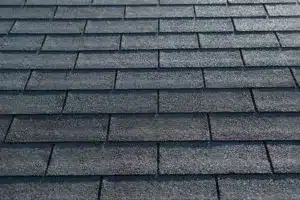
- Lifespan: Typically last between 15 and 20 years.
- Characteristics: These are the most basic form of asphalt shingles and are recognized for their flat appearance. They are the most cost-effective option and work well in a variety of climates but have a shorter lifespan and less resistance to high winds.
Architectural Asphalt Shingles

- Lifespan: Can last between 20 to 30 years.
- Characteristics: Also known as laminated or dimensional shingles, these are thicker and more robust than 3-tab shingles. They have a contoured, dimensional look that mimics the appearance of natural wood or slate and offers improved durability and a better warranty.
Class 4 Asphalt Shingles (Hail Resistant)
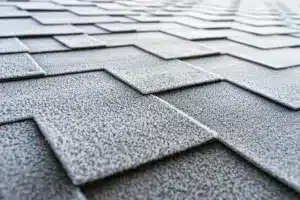
- Lifespan: Designed to last between 30 and 50 years.
- Characteristics: These shingles are specifically engineered to withstand severe weather conditions, including heavy hail and wind. They are made with a tougher, more flexible material and often come with the highest impact resistance ratings, making them ideal for storm-prone areas.
Tile Shingles
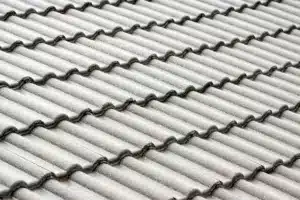
- Lifespan: Generally last over 50 years.
- Characteristics: Tile shingles can be made from clay or concrete and are extremely durable. They offer a distinct aesthetic appeal with a variety of color and style options. Resistant to fire, rot, and pests, tile shingles are particularly suitable for hot climates as they provide excellent insulation properties.
Slate Shingles
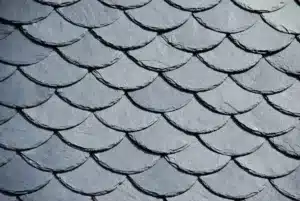
- Lifespan: Can exceed over 100 years.
- Characteristics: Natural slate roofing is one of the longest-lasting roof materials available. It’s incredibly durable, resistant to harsh weather, and maintains a distinctive, elegant appearance. The weight and cost of slate are considerable, requiring reinforced roofing structures and a significant investment.
Synthetic Slate Shingles (e.g., Davinci Shingles)
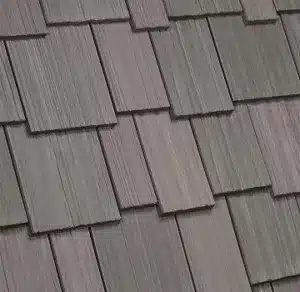
- Lifespan: Can last 50 years or more.
- Characteristics: These shingles mimic the look of natural slate but at a lower cost and weight. Made from engineered polymers and other materials, synthetic slate shingles are easier to install and maintain. They provide good durability and are an eco-friendlier option compared to natural slate.
Cool Roofs
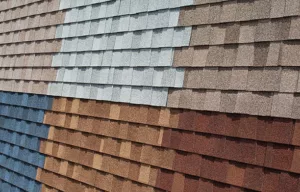
- Lifespan: Typically lasts 20-30 years, depending on the material.
- Characteristics: Cool roofs are designed to reflect more sunlight and absorb less heat than standard roofs. They can be made from a variety of materials, including reflective paint, specialized gravel, or highly reflective tiles and shingles. These roofs significantly reduce building cooling needs, decrease energy bills, and mitigate the urban heat island effect. They are particularly effective in hot climates and can contribute to building sustainability.
Each type of shingle offers unique benefits and considerations, from cost to durability to aesthetic appeal. Choosing the right material depends heavily on your local climate, the architectural style of your home, and your budget.
Innovating Roofing Technology
New roofing materials offer more ways to make roofs last longer. Cool roofing lowers how much heat the roof absorbs, which slows down aging from heat. Green roofs, which support plant life, provide insulation and handle rainwater, helping cool down cities and add to biodiversity.
Conclusion
No matter which material you choose to go with, Good Shepherd Roofing can help you with your residential or Commercial Roofing needs. Check out what makes us different from other roofers.
Understanding the different roofing materials and how they age is crucial for homeowners. Proper maintenance and wise material selection are key to extending the lifespan of your roof, protecting your investment, and ensuring a durable and effective roof for many years.

